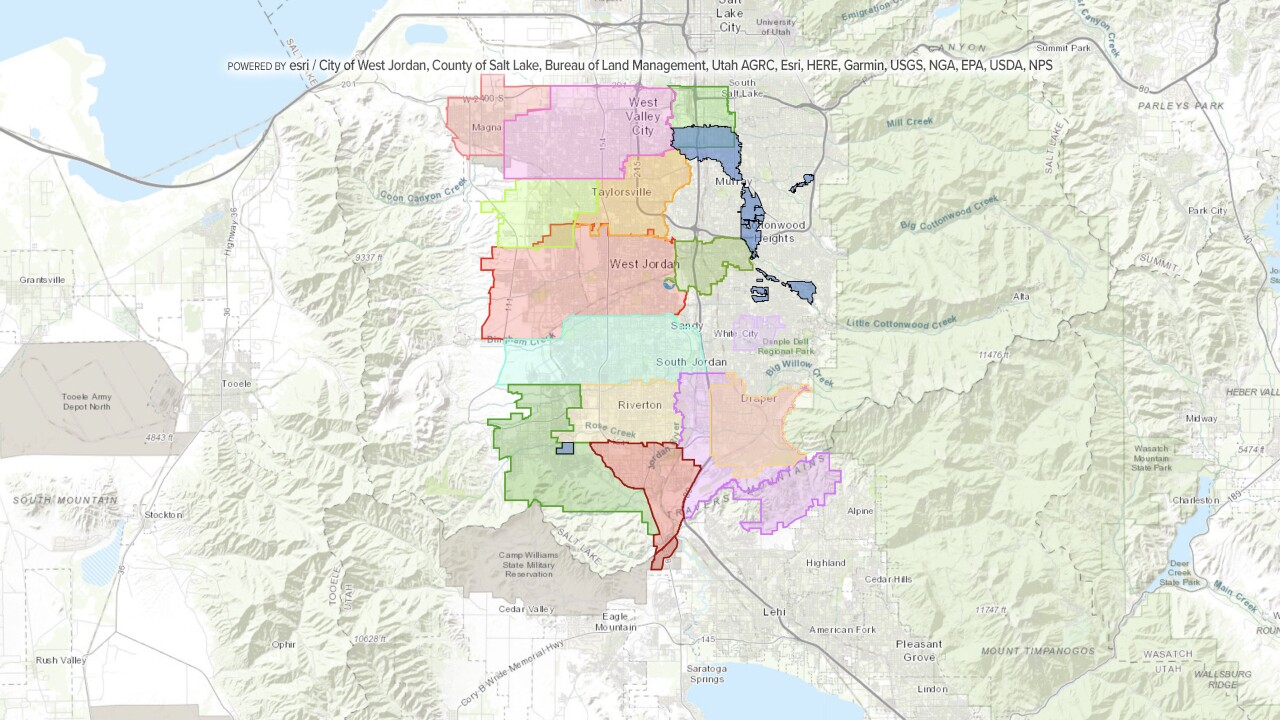HERRIMAN, Utah — The Jordan Valley Water Conservancy District, one of Utah's largest suppliers of water, is proposing a property tax increase across its member cities to pay for infrastructure needs and prepare for population growth.
The tax increase, which amounts to about $8 more per year for the average household, would be used to expand the water treatment plant in Herriman, build new pump stations and improve infrastructure in cities from West Valley to Bluffdale. In total, it would be about $180 million in infrastructure bonding over the next five years.
About 750,000 people right now are serviced by the Jordan Valley Water Conservancy District.
"Over the next 40 years we expect the population in our service area to increase by over 50%," said Alan Packard, the district's assistant general manager.
For an average home, Packard said, the tax would go from about $86 a year to $94. It would enable the district to issue bonds to pay for the infrastructure improvements.
"We’ll probably need to have some increases in our water rates in the next few years to support paying those bonds back," he told FOX 13 on Monday.
City councils across the Salt Lake Valley are starting to hold hearings to notify the public about it. The water district itself plans an August public hearing before it votes on whether to impose the tax increase.

The issue is growth and the finite supply of water. The district has urged people to cut their outdoor water use in Utah's drought emergency.
Utah has been in a drought emergency since earlier this year. As of last week, 98% of the entire state is in extreme or exceptional drought — the worst conditions there are, brought about by a warming climate and a dwindling water supply. State officials have warned of water shortages if the drought continues into next year without steps being taken to conserve now.
The good news is, local water districts are reporting evidence of people following calls by the governor and others to conserve.
"Our supplies are enough that we don’t have any mandatory restrictions," Packard said. "But we’re anxious for people to use water efficiently so that we can carry over or store that water for next year to keep from being in a more drastic and emergency situation."
The demand for water will only get worse as Utah's population booms. The district is currently using water from Deer Creek, Jordanelle and will soon dip into Strawberry Reservoir.
"The hard thing is it takes a drought to get anyone to pay much attention to water," said Herriman City Council member Sherrie Ohrn, who addressed residents on the situation at last week's council meeting.
Council member Ohrn called for the city and residents to conserve water. She spoke about the Great Salt Lake shrinking, and warned it will impact future water needs.
"We’re doing a really good job of growing more houses in the state," she said. "But we aren’t producing any more water because we can’t."
She noted that Herriman itself isn't imposing a tax hike, but the district is to pay for the infrastructure needs. The goal of the infrastructure improvements is to maximize what water the state does have.
"I’m telling you the infrastructure that should get the most focus and gets the least is water," Council member Ohrn said. "Because you’d all rather turn on your water and flush your toilets."



